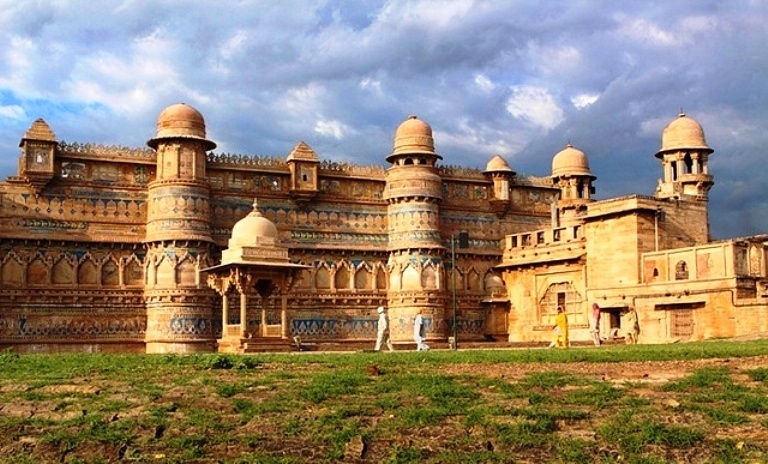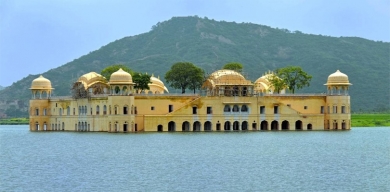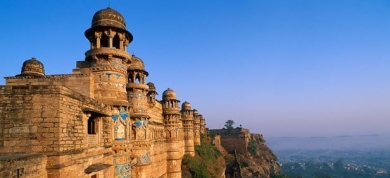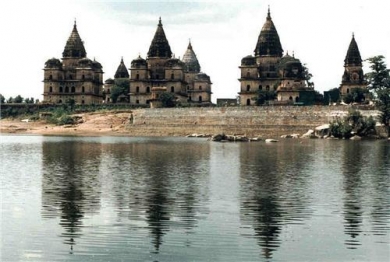Gwalior's tradition as a royal capital continued until the formation of present day India, with the Scindias having their dynastic seat here. The magnificent mementoes of a glorious past have been preserved with care, giving Gwalior an appeal unique and timeless. Gwalior's history is traced back to a legend. In 8 A.D, a chieftain called SurajSen was stricken by a deadly disease. He was cured by a hermit saint, Gwalipa, and in gratitude founded a city which he named after the saint who had given him the gift of new life. The new city of Gwalior became, over the centuries, the cradle of great dynasties and with each, the city gained new dimensions from warrior kings, poets, musicians and saints, contributing to making it a capital renowned throughout the country.Since then, Gwalior is considered to be a city where a rich cultural tradition has been interwoven into the fabric of modern life. Also where a princely past lives on in great palaces and their museums. And where a multitude of images merge and mix to present to the visitor a city of enduring greatness.
Some important questions arise when we choose a destination.
Most important places to Visit in Gwalior.
Which all places I can visit along with Gwalior ?
Tour Itineries along with Gwalior
Best time to visit Gwalior
How to reach Gwalior ?
Most important places to Visit in Gwalior.
Gwalior Fort
Gwalior Fort was built by Raja Man Singh Tomar, in the 15th century, its beauty has earned it the epithet of "The Pearl amongst Fortresses of India" by the Mughal ruler 'Babur'. The fort is girdled by sandstone walls and stretches over an area of 3 sq km.
Man Mandir
Man Mandir was also built by Raja Man Singh Tomar, between 1486 and 1517. Though, most of the ornamentations of this mammoth edifice have been corroded with time, traces of elaborate architectural trimmings and patterns still testify its glorious past.
Teli-ka-Mandir
Built in the 9th century AD, this ancient edifice is a Pratihara Vishnu temple, it towers at a height of 100ft. According to legends, the temple is so named as it is believed to be fabricated in the 'Telangana' architectural style.
Saas-Bahu Temple
Saas-Bahu temple is also a major landmark of Gwalior is dedicated to Lord Vishnu. Built in 11th century, the name of the temple can be quite misleading. The temple, as many people believe, is not dedicated to 'Saas' (mother-in-law) and 'Bahu' (daughter-in-law
Jai Vilas Palace
Jai Vilas Palace is the current residence of the Scindia family; 35 of its palatial rooms have been converted into the 'Scindia Museum'. The architectural style of this imperial structure is dominantly Italian, with a fine blend of Corinthian and Tuscan architectural modes. Handpicked royal treasures and historical artifacts from different countries are displayed in the museum. The most striking one is a silver train, with cut-glass wagons and miniature rails, which chugged along dinner tables and was used to serve food to the guests.
Tomb of Tansen
The father of Hindustani classical music and one of the nine jewels of Akbar's court, legendary singer Tansen is buried in Gwalior. Built in the early style of Mughal architecture, the tomb of Tansen has a simple and pristine aura about it. The headstone is surrounded by beautiful gardens on all its sides. Apart from being an ancient monument, the site also underlines the rich cultural heritage of Gwalior. Every year in the month of November/ December, a national level music competition is held at the place, to venerate this great musician.
Mausoleum of Ghaus Mohammed
Located in the old town of Hazira is the mausoleum of Ghaus Mohammed, the 'Afghan Prince turned Sufi Saint' who helped Babur in annexing the Gwalior Fort. Built in the 16th century, this sandstone tomb is an exemplary piece of Mughal architectural adroitness. Built opulently in early Mughal lines, the screens of the monument have been carved using the pierced stone technique. Thus, these fine trellises look like delicate and exquisitely patterned laces. The beauty of the monument is also enhanced by the dappling gardens that surround it.
Which all places I can visit along with Gwalior ?
Tour Itineries along with Gwalior
Gwalior-Orchha-Khajuraho-Delhi
Delhi - Varanasi - Khajuraho - Orchha - Shivpuri - Gwalior - Agra
Mumbai - Bhavnagar - Ahmadabad - Ujjain - Mandu - Indore - Bhopal - Gwalior - Agra / Delhi
Delhi - Agra - Gwalior - Jhansi - Bhopal - Indore - Delhi
Delhi - Khajuraho - Jhansi - Gwalior - Bhopal - Indore - Ahmedabad - Zainabad - Rajkot - Sasangir - Mandvi - Bhavnagar - Ahmedabad - Mumbai
Delhi - Udaipur - Ajmer - Pushkar - Jaipur - Agra - Gwalior - Khajuraho - Orchha - Delhi - Amritsar - Delhi
Delhi – Agra – Varanasi – Khajuraho – Orchha – Gwalior – Shivpuri – Ujjain – Mandu – Bhopal – Sanchi – Pachmarhi – Jabalpur – Mumbai
Delhi - Indore - Omkareshwar - Maheshwar - Mandu - Ujjain - Bhopal - Sanchi - Bhimbetka - Bhojpur - Pachmarhi - Kanha - Bandhavgarh - Khajuraho - Orchha - Gwalior - Agra
Best time to visit Gwalior
The best season to visit Gwalior is either in the winters or during the spring season. The place can be enjoyed to the optimum if you plan a visit anytime between the months of october and March.
Summer Gwalior faces the extremities of nature, the maximum temperature during this season soars to about 45o-47oC..
Winter Winters season in Gwalior is from November till February and is very severe. The mercury level may dip to a minimum of 4oC. However, normally the temperature fluctuates between 21oC to 6oC.
Monsoon The monsoon season in the city lasts for approximately 3-4 months. Generally, the monsoon showers begin in the third week of June and last till the month of September.
How to reach Gwalior ?
How to reach Gwalior by air
Gwalior airport is located 8 km from the main city center. Flights of Indian Airlines (to Delhi, Khajuraho, Bhopal), Air Deccan (to Delhi, Agra, Indore), Alliance Air (to Jabalpur, Indore, Agra), Jet Airways (to Indore, Mumbai), and Air Sahara (to Mumbai, Jaipur, Agra, Varanasi) connect the place to almost all the key Indian cities.
How to reach Gwalior by rail
Train is one of the most convenient options for traveling to Gwalior. The railway station is located within the city and falls on the main Delhi- Mumbai and Delhi- Chennai rail link. Some of the major trains that pass through the station are Shatabdi Express, Chhattisgarh Express, Hirakund Express, Kerala Express, Punjab Mail, Chambal Express, Goa Express and the Grand Trunk Express.
How to reach Gwalior by road
Gwalior is connected by a good system of road, linking it to all the adjoining cities in Madhya Pradesh and the other nearby states. It is well-connected to places like Agra (118km), Jaipur (350km), Delhi (321km), Bhopal (423km), Chanderi (239km), Indore (486km), Jhansi (101km), Khajuraho (275km), Ujjain (455km) and Shivpuri (114km) by road. You will easily get buses as well as taxis for reaching the city.
Packages

4 Nights MadhyaPradesh - 3 Star - Rs.27400
Gwalior Packages

6 Nights Madya Pradesh - 3 Star - Rs.38100
Gwalior Packages

10 Nights Madhya Pradesh - 3 Star - Rs.58100
Gwalior Packages




